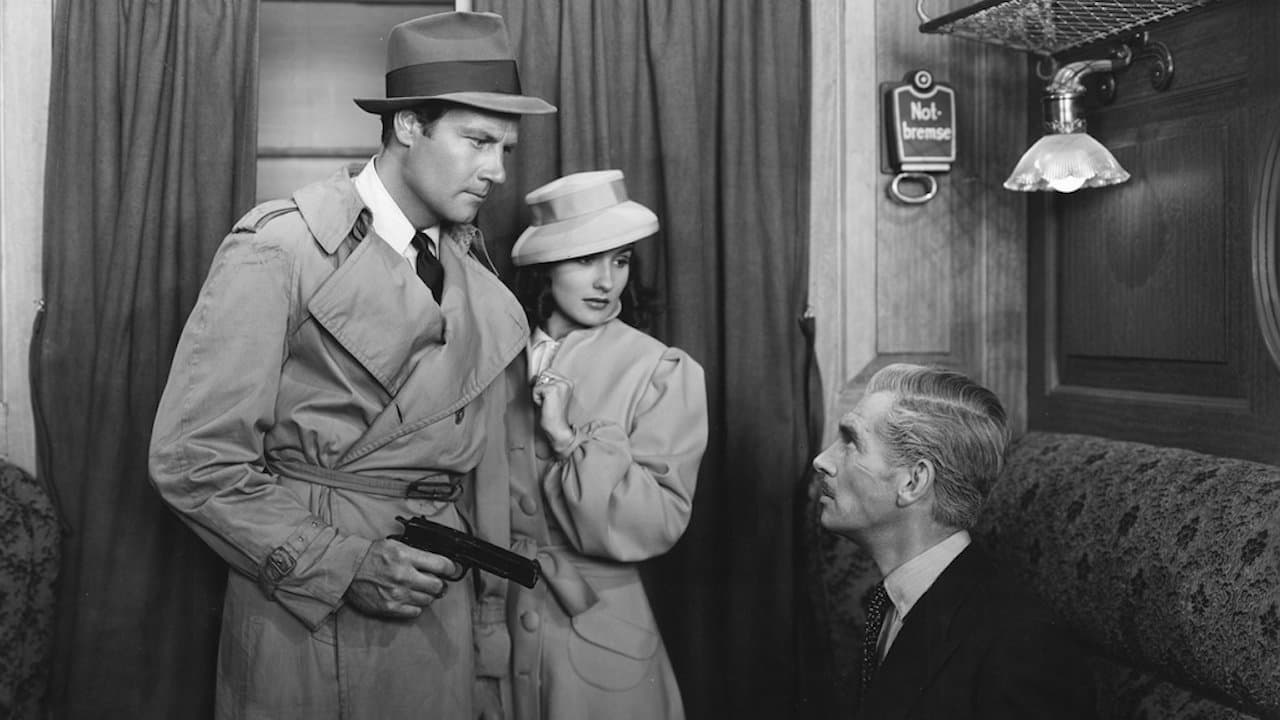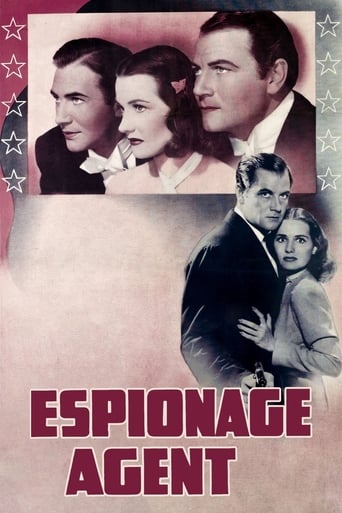

Strictly average movie
... View MoreThis movie was so-so. It had it's moments, but wasn't the greatest.
... View MoreWatch something else. There are very few redeeming qualities to this film.
... View Moreit is the rare 'crazy' movie that actually has something to say.
... View MoreProducer: Hal B. Wallis. Executive producer: Jack L. Warner. Copyright 30 September 1939 by Warner Bros Pictures, Inc. A First National picture. New York opening at the Strand: 22 September 1939. U.S. release: 30 September 1939. Australian release: October-December 1939. 83 minutes. NOTES: Thanks to her co-starring roles with super-star Errol Flynn in The Sea Hawk and Footsteps in the Dark, Brenda Marshall was extremely popular with Australian audiences. This seems to be her film debut. COMMENT: Politically dated but it still has some interest. There's a bit of excitement, though the climactic action finishes just as it is warming up. What makes the film interesting is that it is given the full Warner Bros "A" treatment: brisk, slick direction by Lloyd Bacon, attention-getting montage routines, lavish sets and a spectacular support cast. Brenda Marshall, although not as stunningly beautiful as the scriptwriters specify, makes a good fist of the title role.One thing we like about the script is that it doesn't follow conventional melodramatic plot lines but has some unexpected, if politically motivated, twists. Joel McCrea fills the hero part with his usual likableness, while Jeffrey Lynn holds up a small and unimportant part as the hero's buddy. It's wonderful to see Martin Kosleck looking so neat and villainously smooth. Our old friends Robert O. Davis and Hans Schumm are also along to fill out the Nazi ranks. Sarah Edwards and Vera Lewis are disgruntled enquirers at the consulate and there is a large round of familiar cameo players on the State Department staff.Bacon's direction is brisk and assured, if inclined to use too many close-ups. Rosher's lighting photography treats his players kindly, even if it is a minor factor in the creation of atmosphere. But the sets are impressive and the music score has that familiar Warners' sound.
... View MoreWant to know how much difference a director can make? Watch this film, with Joel McCrea as a blundering American naïf in Europe on the eve of World War II exposing an Axis spy plot under the hacky direction of Lloyd Bacon, and then watch "Foreign Correspondent," which McCrea made the next year in a similar role, similar plot, at least one supporting cast member (Martin Kosleck) in common and even another sequence set during a rainstorm -- but under the direction of Alfred Hitchcock. "Espionage Agent" isn't a bad movie and it probably would be a lot more likable if McCrea hadn't made "Foreign Correspondent" (albeit playing a terminally naïve journalist instead of a terminally naïve diplomat) a year later.Incidentally, the comment by "bkoganbing" is wrong. Though the film begins in 1915, it quickly leaps forward to 1936 (the year the Spanish Civil War broke out) and the bulk of it takes place in the late 1930's -- though, even so, the German uniforms are otherwise correct but their armbands are missing the swastika. Even after making "Confessions of a Nazi Spy" (which was about Nazi abuses in the U.S., not in their homeland), Warners was still being skittish about directly taking on the German government.
... View MoreWarner Brothers really could have used a better script for this mishmash of a movie which managed to juxtapose the events of World War I into the days before World War II.The film opens with a description of the famous Black Tom explosion of a munition factory located on an island in the middle of the Hudson River. You can still see the remnants of it today. This occurred before World War I and was traced to German saboteurs then. The message is quite clear, America needs to have its own espionage agency and we got one with the formation of the Office of Strategic Services as World War II broke out. Until then such distasteful spying matters was handled within the State Department.Joel McCrea is a foreign service officer who marries refugee Brenda Marshall. Problem is that Marshall had gotten help from the Germans and they expect some help in return. Of course she's in love with her new husband and she refuses and exposes their contact man, Martin Kosleck. With McCrea's dismissal from the foreign service, the newlyweds decide to form there own plan to expose the German's secret espionage network with a little spying of their own. How they manage is the rest of the film.For a film that supposedly takes place before American entry into World War I, why is that everyone is dressed in the Nazi uniforms of the Thirties? Everything is there but the swastika. There's not even any kind of effort with music or sets to set the film in its proper time frame. The only reason this gets as much as three stars is a tribute to the players involved. Joel McCrea was simply in a dress rehearsal for the far better Foreign Correspondent he would do the following year.
... View MoreThere is little doubt in this film that World War II is about to begin. In fact, it was released just twenty-one days after the invasion of Poland by German forces and was in production long before. Scare tactics aside, the movie reveals real fears during the months preceding the war. Spies, counterspies, terror, suspicions, and other prologues to war gave ample warning of renewed global conflict. This movie reflects that warning.Viewing this film leads one to wonder, given the ample clues, how the war could surprise anyone.
... View More